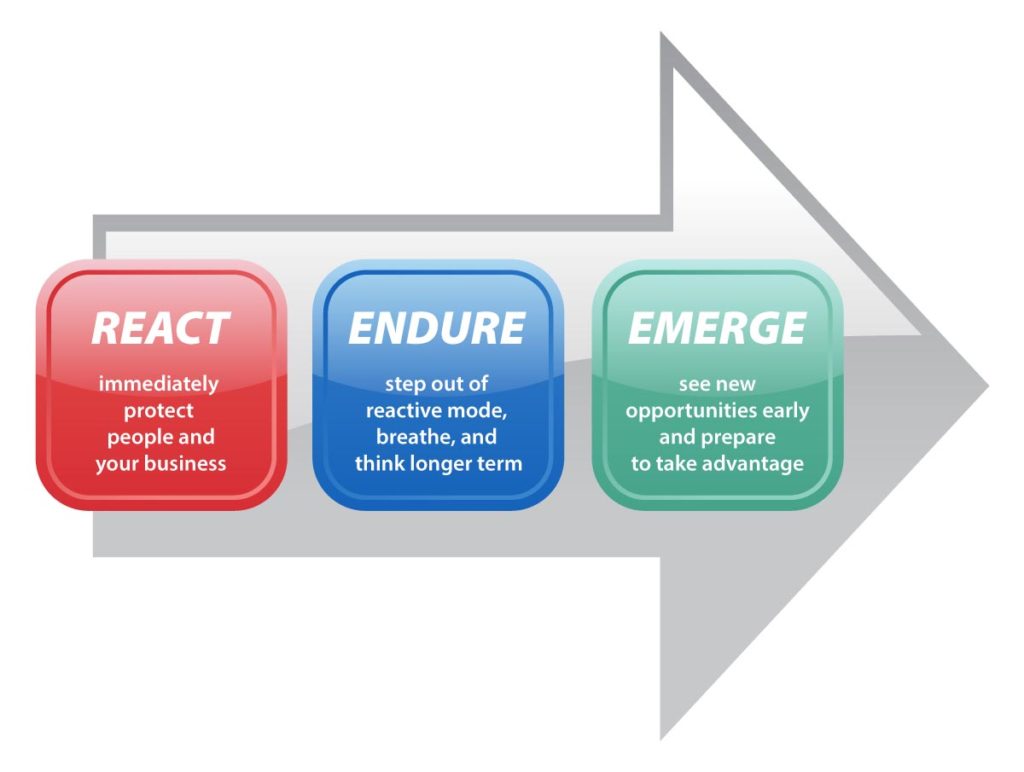 I don’t know if I can teach you how to create clarity in one short article, especially when your situations all differ radically and speed is of the essence, but I’m going to try because creating clarity has never been more important.
I don’t know if I can teach you how to create clarity in one short article, especially when your situations all differ radically and speed is of the essence, but I’m going to try because creating clarity has never been more important.
To create clarity, you need to be intentional and disciplined. This means that at any given moment of your important discussions, you are pursuing a specific, concrete outcome that leads to a larger outcome and which is clear to all involved so you can maintain focus on one specific outcome at all times. The goal here is to protect you from two super common mistakes that are going to hurt a lot of businesses during this crisis: leaping to solutions and ignoring entire areas of concern.
I think the easiest way to think about the first rounds of creating clarity in a crisis is to think in terms of dividing and conquering. In order to divide and conquer, you must first identify all of the pieces—all the important factors, the higher-level roadmap. Thus, a list of all the pieces is the first specific, concrete outcome you must pursue. An incomplete list leads to the super common mistake of omitting entire areas of concern. Diving into the details too soon leads to leaping to solutions, solutions that rarely work, by the way. So begin by ensuring you have created the right list.
By identifying the three levels of response, React, Endure, and Emerge, I’ve made the first division. That’s your first list.
By agreeing on this list, you are more likely to act on all the necessary levels. Many businesses will never get to this list, they will just react and react and react. When it finally occurs to them that they need to think farther out, it may be too late.
One round of dividing and conquering is rarely sufficient. Each piece on your list now requires a second round of divide and conquer. Thus, the second specific concrete outcome you need is another list of important factors for each of the items on the first list of factors. But take them one at a time! Be intentional! Be focused! If you are, you will be more thorough, faster, and better able to hear everyone’s input.
By listing three to four questions for each level in the article above, I’ve already made the second division. But that second division isn’t necessarily complete. I didn’t necessarily list all the high-level questions you will need to address. One at a time, before you start answering any questions, decide what other questions need to be on the list. Again, this is how you avoid omitting entires areas of concern and getting dragged down into the weeds too soon.
Take React for instance. My questions have identified five critical areas of concern. What would you add to this list?
- Keeping everyone safe right now
- Protecting revenue sources
- Minimizing unnecessary expenses
- Providing reasonable and fair options and compensation for our employees right now
- Identifying risks
The point is to be specific, intentional, and disciplined. To bring some order to the chaos so you don’t dive in too soon and leap to solutions or omit whole areas of concern. Without intentionally completing this list, might you miss something important?
If you take the first item above and divide and conquer once again – before diving in – you might end up with a list that looks like this:
- employees
- customers
- suppliers
- distributors
- employees’ families
Anything missing before we go deeper?
Another round of divide and conquer might lead to distinguishing among:
- employees who can work from home exclusively
- employees who must come to work daily, but who drive their own cars and won’t interact with non-employees at work
- employees who must come to work daily and rely on public transit
- employees who can work at home most of the time, but will have to come in occasionally
- employees who must come to work daily and interact with outsiders
Using this divide and conquer technique will:
- Bring order to chaos
- Focus the participating brainpower on one issue at a time
- Avoid leaping to solutions or omitting areas of concern
- Create a disciplined, thoughtful, and thorough response to any situation.
In short, to create clarity. I don’t doubt that your team would eventually hit most of these topics without being this intentional and disciplined, but I do guarantee that this technique will get you there faster, reduce risk, and lead to better results.
I wish you luck and clarity. If you need help, give me a call or send me an email at info@uncommonclarity.com. My Clarity-on-Call program might be just what you need.



Comments are closed.